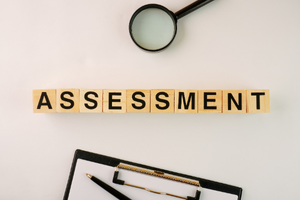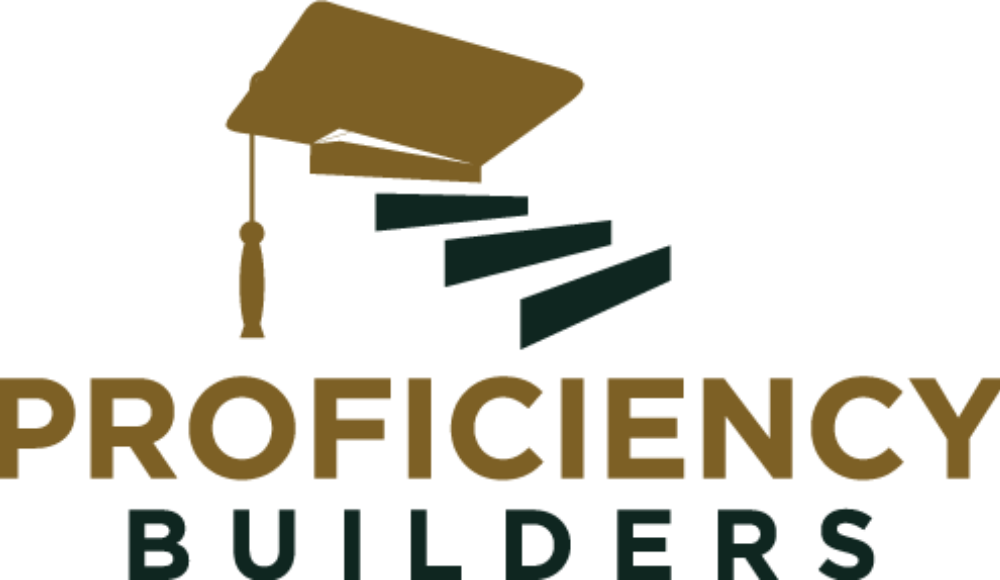Closing Foundational Gaps While Maintaining Grade-Level Instruction
by Brittany Mack
More than ever, teachers and families are at a loss for how to close proficiency gaps while still supporting students through current grade level skills. This in-school tutoring approach will help students close foundational gaps while still moving the needle in core instruction and giving them access to on grade-level material.

Teaching students to run but they are still learning to walk…
At a very young age we are told there is an order of operations for life. “Crawl before you walk,” “walk before you run,” “learn to read before you can write;” we are told to master the basics before taking on more complex things. But what about if we can’t? What about when we are forced to run? Forced to take on complexity? And how does this relate to learning in a climate where students are being left behind due to factors outside of their control?
In our current education climate, we are faced with resource gaps such as inadequate funding, teacher shortages, lingering impact of the pandemic on learning, and unequal access to quality education particularly for students facing systemic barriers. This has led to jarringly low entry points for students in both Literacy and Math and as school administrators pour over student performance data, they realize they are not closing the gaps (and aren’t sure how to).
Tutoring at an entry point close foundational gaps
Students facing foundational gaps in Literacy and Math can be supported at their entry point in tutoring while still accessing core instruction. Essentially, tutors can slow down to walk with students while they practice pacing themselves in core instruction until they can truly run alongside their teachers and on grade-level peers. In this approach, tutors, teaching, and school administrators partner to select a group of students eligible for foundational tutoring in literacy and math, fully internalize student data, scope foundational support, and pull-out students to during intervention blocks to remediate said gaps with a frequent and specified progress monitoring cadence. Here are a few enabling conditions and a description of a tutoring “Nirvana” so that we can support our students during this turbulent time:
Consistent Access to Relevant Student Data
For this approach to be successful, it must be data driven. Ideally, both tutors and school partners would have access to baseline assessments in foundational literacy and math to fully understand the entry point of the student and which foundational gaps persist.

Early Literacy Testing: Most schools have access to a foundational literacy test administered for students K-5 or K-8 (e.g., DIBELS). These are assessments designed to quickly and accurately measure students’ progress in foundational literacy skills like phonemic awareness, reading fluency, and reading comprehension. Reading accuracy and fluency data can be extremely valuable in measuring how students are functionally reading. This data is also extremely important to understanding what students can access in comprehension as fluency is the bridge to comprehension. If students have gaps in reading accuracy, gaps in fluency will persist. If students have gaps in reading fluency, gaps in comprehension will persist, and when gaps in comprehension persist – students have difficulty accessing grade level tests and literacy skills. By sharing these data with tutors, we can target early literacy instruction at the main point of vulnerability creating an on ramp for access to comprehension and grade level standards.

Baseline Math Assessment:
Similarly, a baseline math assessment, diagnostic, or screener will provide information on foundational and domain-specific skills like numeracy, number sense, arithmetic, basic operations, and problem-solving. For example, in math class, if students are spending an onerous amount of time doing basic counting or computing because they lack foundational skills, they will also get bogged down in solving a problem and end up lost. By sharing this data with tutors, we can target numeracy gaps so that students can more quickly and accurately solve more dynamic grade level math problems. Tools that diagnose where kids are in math typically fall into the category of universal screeners, diagnostic assessments, or formative assessments. Some examples include the iReady Math Diagnostic, mClass Math, or other platforms like IXL and MobyMax.
Student Achievement and Growth Data: Benchmark assessments (beginning, middle, end of year), State Assessments, and other summative assessments can also clue tutoring partners in to where students are at compared to grade level trajectory. Analyzing this data easily illuminates which student groups need foundational supports

Targeted Instruction to Close Foundational Gaps
Targeted instruction would be provided by the tutor and would be aimed to remediate foundational gaps per student baseline data. Preferably, students would not be pulled out of core instructional blocks. Once pulled out, tutors would work with students at their main point of vulnerability. Some examples provided below.
Early Literacy
Accuracy: If a student struggles with reading accuracy it grades 3-8 then they are struggling to decode words when trying to read a grade level text. Tutors can pull students out to explicitly teach decoding routines, syllable types, and practice solving multiple words in and out of context to bolster accuracy.
Fluency: If a student struggles with reading fluency in grades 3-8 then they are not reading the appropriate words per minute to comprehend a grade level text. Tutors can pull students out to read grade level texts while giving fluency feedback (punctuation, prosody, tone, etc.).
Foundational Math Skills
Number Sense: If a student struggles in their ability to understand and work with numbers then they will have trouble quickly solving problems that may include dynamic layers of addition, subtraction, multiplication, and division. Tutors can work with students on fast math, skip counting, multiplication tables and other exercises that increase number sense and close foundational gaps to allow access to other types of problem-solving.
Sequence of Session: There are a few enabling conditions to this type of pull-out tutoring method:
- Students must know where they are at and have a goal.
- Students must be invested in their own learning.
- There must be an element of joy to the learning.
- There must be an element of practice aligned to grade-level content to mirror what they will be asked to produce during core instruction.

Frequent Progress Monitoring
Progress monitoring allows for tutors to remain responsive to what students need and provides ongoing insight for school leaders…
Bi-Weekly: Especially when the targeted skill is specific, it is important to pulse check student progress to adjust as needed.
Quarterly or by Semester: It is typical with high-dosage tutoring for students to make gains quickly in specific skills when they are practicing 4-5 times a week. Quarterly progress monitoring allows for reassessing approach and student group to make sure the right students are in tutoring based on target skills and student performance data.
Yearly: Data collection both in formative and summative data will help inform future approaches for tutoring and codify success year-over-year.
High Dosage
Frequency: Sessions occur at least 3–5 times per week to ensure consistent, meaningful learning time.
In-School Delivery: Tutoring takes place during the school day, increasing access and minimizing barriers.
Small Group Size: Groups are kept to 1:1 to 1:3 to allow for individualized instruction and strong engagement.
Qualified & Agile Tutors: Tutors are well-trained and responsive to student needs, using data to adjust instruction and undergoing ongoing real-time coaching and feedback per their practices.
Aligned Curriculum & Materials: Instruction is grounded in high-quality resources that support grade-level standards.
Relationship Building: Strong tutor-student relationships boost trust, motivation, and academic confidence.
Support in Core Instruction to Propel Grade Level Learning
Some will say that progress will continue to fledge if students do not have access to quality core instruction. Progress may also fledge if students are not supported during core instruction. This is why it is important to develop teachers while developing tutors. Conditions are optimal for students to close gaps when all tiers of instruction are quality. School administrators work relentlessly to develop teachers, close content knowledge gaps, and provide creative solutions for supporting all learners in the classroom.
Wrap Around Investment
Relationship-building is essential to tutoring success. When students are invested in their learning, teachers are aligned with tutors, family know the why and progress of tutoring, and school administration is as invested then we can truly support students in making progress pursuant to their academic goals.
Building a Path Forward, Together
Closing foundational gaps without sacrificing access to grade-level content is not only possible—it’s essential. This tutoring approach proves that with the right conditions, students don’t have to choose between catching up and keeping up. By leveraging data, delivering targeted instruction, and maintaining alignment across all tiers of support, we can create a learning environment where every student is seen, supported, and challenged. But this work can’t fall on tutors alone. It requires collective investment—schools, teachers, families, and tutors united in belief and effort. If you’re a school leader, instructional coach, or educational partner, now is the time to act. Reimagine intervention as a true bridge to equity and grade-level achievement. Let’s build systems where no student is forced to run before they can walk—but where all are empowered to soar.



